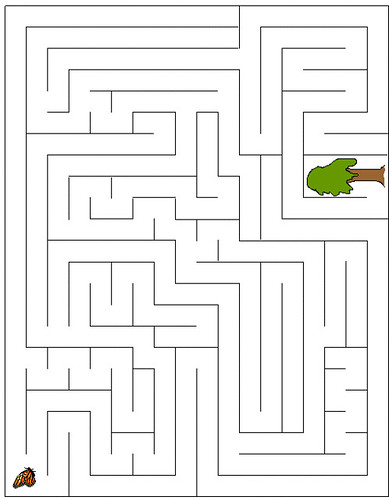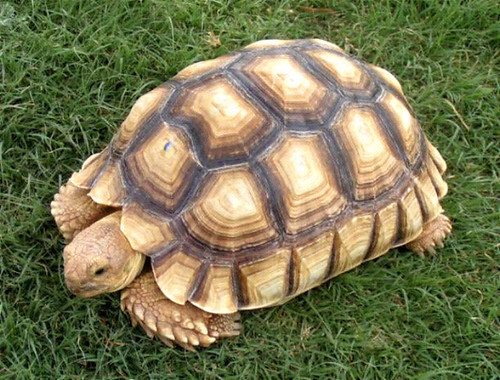




Activity: Project Refinery
Theme: Humanity-based Game
Robot Name: GOLEM ver 1.0
We had made a major modification of our final project, the aMAZEing robot in previous entry with something which is more astonishing in design. The initial idea was a maze robot that walks through a provided rail, eliminates any obstacles, respond to a sound command and return home. Well, it’s totally BORING. We realized that it has no actual goal, and there is no reason to built unnecessary set of tasks without beneficial returns (such as moral value or the robot benefits to human).
Thus, our current activity was set-up to refining our prior project into something that give meaningful effect to us as a student, as a designer and a human being. The mixed-up process between Mindstorm software and brainstorm ideas are resulting to our final project – Preserving Humanity Value by Guiding an Old Lady to the Mini Market (PHVGOLEMM) or simply called as Guiding an Old Lady to the Market (GOLEM) robot; which is a modification of previous aMAZEing robot.
GOLEM was designed as not bad as it sound. The main reason of building this robot is to encourage young people to pay respect to senior citizen even if they were born as a malfunction robot.
How GOLEM Works?
GOLEM functions is similar as aMAZEing robot, but with a slight modification. GOLEM portrays as an old lady who suffered by cataract and had a very severe sight due to it old age. Every morning, she went to the nearest market to restock the supplies. But, due to the poor sight, she needs help from us to guide her to the right path. But still, she has a very keen ear to listen (the sound sensor) to responds to. Our role is to make sure she passes the correct path without stray to the dead end path by blow the whistle loudly (to turn right) or quietly (to turn left) until she arrives at the market. Then, we help her to return home in the same way. During the trail, there will be some obstacles that blocking GOLEM to cross. Born as a natural fighter, she can eliminates any obstacles with her walking stick within a single strike (motor A).

Problems and Solutions
There's no problem encountered during developing GOLEM since we just modifying the oldest version of this robot (aMAZEing). We just found difficulty in designing a robot that resembles an old woman posture, to meet with our theme.
Project Mindstorm: First Attempt
Theme: Maze
Robot Name: aMAZEing

OBJECTIVE
Try to find a way home, remove any obstacles along the track and avoid dead end path as fast as we can.
ROBOT OVERVIEW
We had planned to create a maze solver robot that move on a specific trail and controlled by sound to change the directions. aMAZEing starts at the starting point and try to finds a right path to go home. There will be some obstacles during the path and dead ends that aMAZEing will encounter such as a bunch of rock and walls. Supplied with object remover, aMAZEing can clear the obstacles with one powerful strike. Dead end created in every junctions and lead aMAZEing to decides the right path. By using a sound sensor, aMAZEing will instructed to turn right or left at the junction by blowing the whistle in high or low pitch.
aMAZEing should constructed as narrow as it can to save the space for the trail. The ordinary transport style design was selected to provide a free and smooth movement while crossing the trail.
PROBLEMS AND SOLUTIONS
Initially, the sound sensor unable to recognized the instruction to turn left or right because the dBa value was not set properly. Thus, aMAZEing just move straight and ignored the whistle sound to turn direction and lead to the dead end path. Modification was made through programming data to reset the dBa value as low as it can, so even the lowest pitch of sound can still be detected.
aMAZEing had difficulties in turning right since it was created as left-handed robot. Then, we just realized that our programming for the direction was a parallel block, which just allows the motor to turn left instead of dual-direction. We replaced the single motor blocks with switch block (sound sensor as the stimuli), that make the sound input to recognized high sound whistle (for turning right command) or low sound whistle (for turning left command).

MODIFICATION
We will try to utilize all sensors available to make aMAZEing much more amazing in solving the tasks. The design should be replace with better ‘intelligente’ design to portrays actual AI abilities that aMAZEing had.
That's all for this week. Until next time. ¡Hasta luego!
1. The Dog
2. Table Challenge
3. Maze Robot Game
4. Tortoise
5. Catapult
The reasons of choosing Maze Robot as our project are as following:
a) The Maze Robot is not too difficult for student to design, but not too simple as Table Challenge. We decide to ensure that our project is promoting problem solving skills appropriate with primary school students.
b) The project should have clear objective and fun (implementing game element is part of the project theme).

Mindstorm developers usually take consideration on lifting mechanism as part of their project. Lifting is one of the ability for a robot to do certain tasks such as moving and relocating an object. This mechanism uses motor or robot arm as movement mediator in providing the ability to functioning. In this week activity, our group had decided to reinforce the movement accuracy and power by attaching gears in-between the motor and lifters. We called this robot as... CLAW-TASTROPHE.
How the Claw-tastrophe works?
Command instructed to the NXT through programming. This robot will distinguish objects colour (in this case a ball) to complete the task. First, it will move forward searching for any available objects. When a blue ball encountered, Claw-tastrophe will pick the ball with gigantic claws. Inside the claws, a light sensor was attached to ‘see’ the colour of the balls. It had been programmed that if the object is a blue ball, Claw-tastrophe will release it back by moving backward, opens the claws and throw it far away with a powerful motor speed. this will happens only if the touch sensor activated after hitting with any obstacle.
Claw-tastrophe was programmed to only picking the red ball. When a red ball picked, Claw-tastrophe will turn back in 180⁰ and set forth to put the ball into a container provided at the starting line. Then, it will continue searching until the battery exhausted.

Problems and Solutions
Several malfunctions were occurring while completing assigned tasks. We manage to solve the malfunctions abruptly through redesigning, reconstructing and reprogramming the robot.
Firstly, Claw-tastrophe often failed to grab the ball successfully and make the light sensor unable to determine the colour of the ball. The problem caused by inaccuracy of ultrasonic sensor to detect the tower that hold the ball. So, the distance between the claws and the ball is too far or too close and resulting to claws unable to grab successfully. As the solution, we reconstruct the tower to be at even level with ultrasonic sensor eye so it can detect the tower accurately. The program also rechecks for appropriate value of ultrasonic sensor to react when ‘see’ an obstacle.
Claw-trastophe colour detector often 'confuse' with the colour of the balls. It used to identify every grabbed balls as blue and perform blue-assigned task only. The value of blue and red was added inapt with actual value that the light sensor can read. We realized that it was hard to set actual value that can differentiate between blue and red since the accuracy also depends on ambient light and the distance between the stimulus with the sensor. As the solution, we tried to calibrate the light sensor by put the ball close to the sensor and took the distinctive values displayed in the Mindstorm program. The distance between the ball and the sensor also reduced that allowed no other light to interfere the reading.
The third glitch is during the movement phase. Sometimes, Claw-tastrophy cannot complete the tasks cycle, in which stopped while still not delivered the ball in a container. After an hour inspection, we found that the programming was incomplete. So, we replace the linear Mindstorm block with switch, value and data to complete the task.
On the last week, we had made a discussion on what type of robot that we should develop for our incoming project. We managed to garner ±12 ideas that seem suitable with our task requirement. In further discussion, we had decided to concentrate on the following ideas as the best top 6 for our final project:
1. The Dog

2. Table Challenge
This is a challenge-based project that requires student to compete each other. The idea is simple. A robot will be design in any shape and runs on a table freely without falling down. The sensor might be useful to avoid falling is light sensor (by detecting dark lines at every edge of the table) or ultrasonic sensor (by detecting any range change between the table and the floor). Which groups can stay on the table in the longest time is the winner.
3. Maze Robot
Intelligent robot that can solve the maze by crossing from the starting line until finish at the other end. The robot follow the line, avoid any obstacles and dead end road, turn direction by sound command and stay on the path until find the way out.
4. Floor Cleaner
The janitor-like robot will complete an errand by sweeping the floor that full with red objects (e.g. paper or ball). But it will avoid the blue colour object that assumes as non-garbage objects. The robot will turn 360⁰ to find any nearest object (using rotation sensor) and detecting the object type either blue or red (light sensor). If red, the robot will pick it up and put in the backpack, but ignore if the object is blue.
5. Catapult
Based on war theme, this robot will attack any objects that come closer in specific proximity (ultrasonic sensor). If threaten, the catapult will launch a heavy boulder by using motor enhanced with powerful gears. Then, it will retreat and repeat if the process if threat come again.
6. Tortoise
A pure tortoise shape robot. It will program to crawl slowly looking for green grass (light sensor detecting green tiles). It will stop and move out it head. But if the head touched (attach with touch sensor), it will retract the head into the shell and move at other safe place.

_________________________________________________
The selection for final project should be carefully take in considering our criteria to apply in the classroom. The project should not be too complicated because students have the very basic skill in developing the robot. We also consider that the project must be a robot and not a machine. So, it should have artificial intelligent and can interact with the surrounding by using sensors. The project also should utilize at leats 3 different types of the available sensors to make the robot intelligent.
Activity: Tug of War
Theme: Game
Robot Name: ScramblerBot

We believed that three factors will be the key of success in this activity/competition that is:
Mass
Gravity Centre
Problems and Solutions
Eventhough the pushing force generates from enhanced gears is owesome, ScramblerBot is still too light to withstand with greater force by larger and heavier robots. The tyres failed to grip the tiles and make ScamblerBot drag-out of the boundry. So, we need to strengthen the tyres and add additional equipments to increase the weight and make ScramblerBot resistance to momentum force produced by heavy mass robots.
Activity: Attacking and Defending
Robot Name: Mantis Mentadu

Modified from previous ScramblerBot, our 'creature' had shown its fearless valour in attacking with semi-structured claws (and sometimes choking and poking opponents without prior programmed). The secret is through extensive programming that measuring the appropriate distance and test value in range icon. Our creature will only attacking if the object within specific range only.
